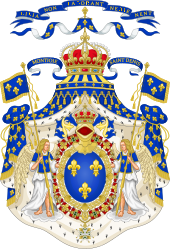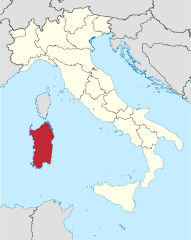Feel free to add any term you like to be authomaticaly linked throughout all the website.
Currently sorted By last update ascending Sort chronologically: By last update
 | By creation date
| By creation dateJoyce Carol Oates:Joyce Carol Oates (born June 16, 1938) is an American author. Oates published her first book in 1963 and has since published over fifty novels, as well as many volumes of short stories, poetry, and nonfiction. Her novel them (1969) won the National Book Award, and her novels Black Water (1992), What I Lived For (1994), and Blonde (2000) were nominated for the Pulitzer Prize.  As of 2008, Oates is the Roger S. Berlind '52 Professor in the Humanities with the Program in Creative Writing at Princeton University, where she has taught since 1978. (Source: Wikipedia) |
Louise Michelle Rosenblatt:Louise Michelle Rosenblatt (23 August 1904 in Atlantic City, New Jersey ? 8 February 2005 in Arlington, Virginia) was an American university professor. She is best known as a researcher into the teaching of literature.  She is best known for her influential texts Literature as Exploration (1938) and "The Reader, The Text, The Poem: The Transactional Theory of the Literary Work" (1978), in which she argues that the act of reading literature involves a transaction between the reader and the text. Each "transaction" is a unique experience in which the reader and text continuously act and are acted upon by each other. A written work (often referred to as a "poem" in her writing) does not have the same meaning for everyone, as each reader brings individual background knowledge, beliefs, and context into the reading act. Additionally, she distinguished between different kinds of reading with her defined "stances". Rosenblatt placed all reading transactions on a continuum between "aesthetic" -or reading for pleasure, experiencing the poem-and "efferent" -or reading to gain meaning. Rosenblatt maintained that the act of reading was a dynamic '"transaction" between the reader and the text. She argued that the meaning of any text lay not in the work itself but in the reader's interaction with it, whether it was a play by Shakespeare or a novel by Toni Morrison. Her work made her a well-known reader-response theorist. (source: Wikipedia) | |
|
Austrian Empire:The Austrian Empire (Austrian German: Kaiserthum Oesterreich, modern spelling Kaisertum ?sterreich) was a modern era successor empire centered on what is today's Austria and which officially lasted from 1804 to 1867. It was followed by the Empire of Austria-Hungary, whose proclamation was a diplomatic move that elevated Hungary's status within the Austrian Empire as a result of the Austro-Hungarian Compromise of 1867. The Austro-Hungarian Empire (1867 to 1918) was itself dissolved by the victors at the end of World War I and broken into separate new states.  The term "Austrian Empire" is also used for the Habsburg possessions before 1804, which had no official collective name, although Austria is more frequent. (source: Wikipedia) |
Giuseppe Garibaldi:Giuseppe Garibaldi (Italian pronunciation: [d?u?z?ppe ?ari?baldi]) (July 4, 1807 ? June 2, 1882) was an Italian general and politician. He is considered, with Camillo Cavour, Victor Emmanuel II and Giuseppe Mazzini, as one of Italy's "fathers of the fatherland". Garibaldi was a central figure in the Italian Risorgimento, since he personally commanded and fought in many military campaigns that led eventually to the formation of a unified Italy. He generally tried to act on behalf of a legitimate power, which does not make him exactly a revolutionary: for example, he was appointed general by the provisional government of Milan in 1848, General of the Roman Republic in 1849 by the Minister of War, and led the Expedition of the Thousand on behalf and with the consent of Victor Emmanuel II.  He has been called the "Hero of Two Worlds" because of his military enterprises in South America and Europe. These earned him a considerable reputation in Italy and abroad, aided by exceptional international media coverage at the time. Many of the greatest intellectuals of his time, such as Victor Hugo, Alexandre Dumas, and George Sand showered him with admiration. The United Kingdom and the United States helped him a great deal, offering him financial and military support in difficult circumstances. In the popular telling of his story, he is associated with the red shirts worn by his volunteers in lieu of a uniform. (source: Wikipedia) | |
|
Piedmont:Piedmont (Italian: Piemonte, pronounced [pje?monte]; Piedmontese and Occitan: Piemont; French: Pi?mont) is one of the 20 regions of Italy. It has an area of 25,402 square kilometres and a population of about 4.4 million. The capital of Piedmont is Turin.  The main local language is Piedmontese. Occitan is also spoken by a minority in the Occitan Valleys situated in the Provinces of Cuneo and Turin. Franco-Proven?al is also spoken by another minority in the alpine heights of the Province of Turin. The name Piedmont comes from medieval Latin Pedemontium or Pedemontis, i.e., ad pedem montium, meaning ?at the foot of the mountains? (attested in documents of the end of the 13th century). (source: Wikipedia) | |
|
Expedition of the Thousand:The Expedition of the Thousand (Italian Spedizione dei Mille) was an event of the Italian Risorgimento took place in 1860. A corps of volunteers led by Giuseppe Garibaldi landed in Sicily in order to conquer the Kingdom of the Two Sicilies, ruled by the Bourbons.  The beginning of the expedition at Quarto. The project was an ambitious and risky venture to conquer, with a thousand men, a kingdom with a larger regular army and a more powerful navy. The expedition was a success and concluded with a plebiscite that brought Naples and Sicily into the Kingdom of Sardinia, the last territorial conquest before the creation of the Kingdom of Italy on March 17, 1861. The sea venture was the only desired action that was jointly decided by the "four fathers of the nation" Italian Giuseppe Mazzini, Giuseppe Garibaldi, Victor Emmanuel II and Camillo Cavour, pursuing divergent goals. It is difficult to determine the true instigator: Mazzini desired to release the Mezzogiorno and Rome while Garibaldi wants to conquer in the name of Victor Emmanuel II, the Kingdom of the Two Sicilies and continue to Rome to complete the unity of Italy, Cavour that wants to prevent at all costs to avoid a conflict with his French ally, Napoleon III, which protects Rome. The expedition also brings new large collective ambiguity and misunderstanding: for Garibaldi, it is to achieve a united Italy; to the Sicilian bourgeoisie, an independent Sicily as part of the kingdom of Italy, and for the mass farmers, the end of oppression and land distribution. (source: Wikipedia) | |
|
Bronte:Bronte is a town and comune of Sicily (in the province of Catania, Italy), near Mount Etna. Bronte, Sicily (See a bigger map) In 1860, during Garibaldi's Expedition of the thousand, there was a riot. The peasants had hoped for ? and did not get from Garibaldi ? an immediate relief from the grievous conditions to which they were forced by the landowners. They revolted in several localities, and at Bronte, on August 4, 1860, Garibaldi's friend Nino Bixio bloodily repressed one of these revolts with two battalions of Redshirts. (source: Wikipedia) |
House of Bourbon:The House of Bourbon is a European royal house of French origin, a branch of the Capetian dynasty. Bourbon kings first ruled Navarre and France in the 16th century. By the 18th century, members of the Bourbon dynasty also held thrones in Spain, Naples, Sicily, and Parma. Spain and Luxembourg currently have Bourbon monarchs.  Bourbon monarchs ruled Navarre (from 1555) and France (from 1589) until the 1792 overthrow of the monarchy during the French Revolution. Restored briefly in 1814 and definitively in 1815 after the fall of the First French Empire, the senior line of the Bourbons was finally overthrown in the July Revolution of 1830. A cadet branch, the House of Orl?ans, then ruled for 18 years (1830?1848), until it too was overthrown. The Princes of Cond? were a cadet branch of the dukes of Vend?mes and, in turn, were senior to the Princes of Conti both of which are now extinct. Philip V of Spain was the first Bourbon of Spain. The Spanish Bourbons (in Spanish, the name is spelled Borb?n) have been overthrown and restored several times, reigning 1700?1808, 1813?1868, 1875?1931, and 1975 to the present day. From this Spanish line comes the royal line of the Kingdom of the Two Sicilies (1734?1806 and 1815?1860, and Sicily only in 1806?1816), the Bourbon of the Two Sicilies family, and the Bourbon rulers of the Duchy of Parma. Grand Duchess Charlotte of Luxembourg married a cadet of the Parmese line and thus her successors, who have ruled Luxembourg since her abdication in 1964, have also been members of the House of Bourbon. Isabel, Princess Imperial, the declared heiress and thrice-regent of the now-defunct Empire of Brazil, married twenty years before their deposition Prince Gaston, Count of Eu, their descendants, known as the Orl?ans and Braganza, would have ascended to that throne had the empire not ended in 1889. From the time of Hugh Capet to Charles X (987?1830), the senior Capets were also the Kings of France. In 1589, Henry IV of France, head of the House of Bourbon, became the senior Capet, following the extinction of male line of the House of Valois. All members of the House of Bourbon and its cadet branches alive today are direct agnatic descendants of Henry IV. (source: Wikipedia) | |
|
Caprera:Caprera is a small island off the coast of Sardinia, Italy, located in the Maddalena archipelago. Caprera, Italy (See a bigger map) In the area of La Maddalena island in the Strait of Bonifacio, it is a tourist destination and is famous as the place to which Giuseppe Garibaldi retired (1856?82). This island has been declared a natural reserve for the particular species of seabirds living on it (royal seagull, cormorant and peregrine falcon). The island's name is linked to that of Giuseppe Garibaldi, an Italian patriot and fighter who lived in the 19th century and was one of the fathers of the Italian independence. He bought the island in 1855 and died there in 1882. His house is now a museum and a memorial chapel and the island itself is a national monument. Caprera is linked to La Maddalena island by a 600 metre long causeway. The island was probably given its name because of the numerous wild goats living on it (capra means "goat" in Italian). It is the second largest island in the archipelago and has a surface of 15.7 km² and 45 kilometres of coastline. Monte Tejalone is the highest point (212 m). On the south-western side there is a very important sailing centre and the many coves and anchorages which can be found along the coastline make the landing easy. Many remains of Roman cargo ships as well as of the boat of Garibaldi were found there. After the Roman occupation, Caprera remained deserted for centuries before being inhabited by groups of shepherds. Later in 1855 Garibaldi decided to settle there and planted the first trees of the blooming pinewood which covers the island today. A century after Garibaldi's death the island was freed from the numerous existing military restrictions and is now completely open to the public. (source: Wikipedia) |
Sardinia:Sardinia (Italian: Sardegna, Sardinian: Sardigna) is the second largest island in the Mediterranean Sea (after Sicily and before Cyprus) and an autonomous region of Italy. The nearest land masses are (clockwise from north) the island of Corsica, the Italian Peninsula, Sicily, Tunisia and the Balearic Islands.  (source: Wikipedia) | |
|
